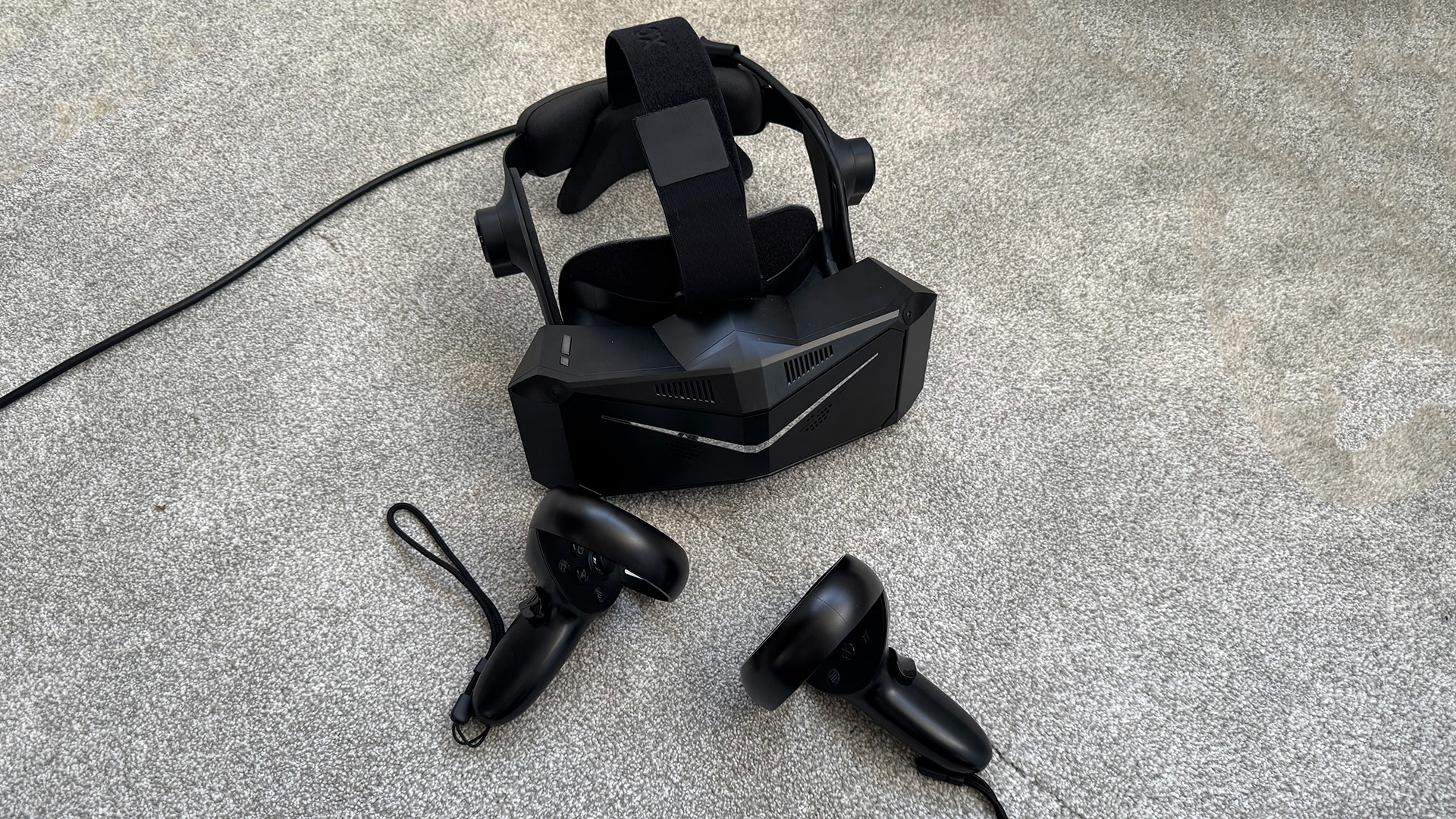GamesRadar+ Verdict
The Pimax Crystal Light has some of the most stunning VR visuals of any headset we've tested thanks to some beautiful QLED displays. In many ways, it's a dying breed of PC VR headset that doesn't offer any standalone power, but its bulky size and cheap build quality for the money prevent it from keeping up with today's competitive options.
Pros
- +
Stunning, crisp displays
- +
Single cable handles all connections
- +
No external battery need
Cons
- -
Bulky and oversized
- -
Disappointing build quality
- -
Needs serious CPU and GPU power
- -
No wireless functionality
Why you can trust GamesRadar+
Virtual reality is quickly evolving as developers continue to push the boundaries of what’s possible both with VR games and more importantly, the hardware we play them on. When it comes to VR headsets, most gamers’ minds will instantly turn to the Meta Quest 3, and for good reason too, it’s a great all-round option that ranks highly on our list of the best VR headsets, but Meta isn’t the only player in the game.
Pimax may not be as widely known as the likes of PlayStation or HTC Vive, but it has a growing history of creating VR hardware dating back almost a decade. This isn’t my first experience with Pimax, though my time with the first-generation Pimax Crystal is something I’d rather forget. A mixture of bugs and connectivity problems made that headset a non-starter and I spent a few frustrating days wrestling with it before eventually giving up.
The Pimax Crystal Light is the brand’s latest effort and I’m curious to see what’s changed (and hopefully improved) in this stripped-down version of the Pimax Crystal that wronged me. The Crystal Light does away with some of the extra bells and whistles that pushed the previous iteration’s price up but still promises a high-end VR experience.
The price remains high, though. $899/£729 still places the Crystal Light well above more established options from Pico, Meta, and PlayStation, If it can deliver on those high-end ambitions, though, could it be a PC headset worth grabbing?
Design
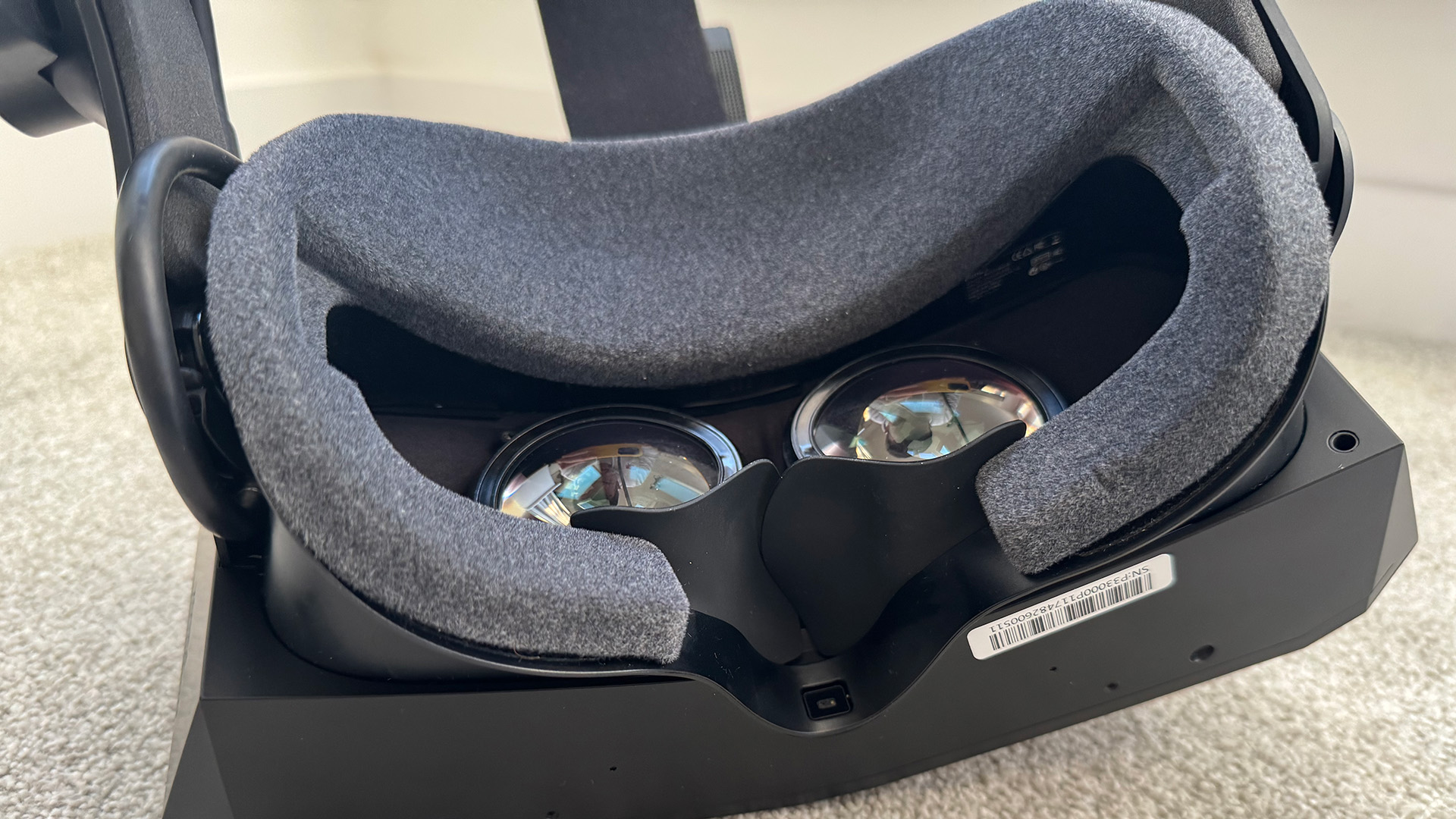
The Crystal Light may technically be a new offering from Pimax but there are a lot of familiar-looking parts across the design of this VR headset. Plenty of the main front housing has been carried over from the fully specced Crystal, which unfortunately for Pimax isn’t necessarily a good thing. While most other VR headsets are looking to sand off their hard edges and reduce overall size, Pimax is doing the opposite with a design that is both massive and somehow almost entirely corners. It ends up feeling distinctly industrial, almost like a utility tool plucked straight from a factory where looks don’t matter and it’s all about efficiency.
Now admittedly looks don’t really matter with a VR headset so long as they translate to a comfortable fit, so I can overlook the funky styling choices to an extent. But what becomes a genuine issue is just how large the Pimax Crystal Light feels on your face. It dwarfs my Meta Quest 3 when placed side by side and while I didn’t find the extra depth to be too much of a problem, the added width certainly is. The Crystal Light extends well beyond the width of my face and becomes clumsy as a result. I’m simply not used to carrying an extra couple of cm off each side of my face so consistently found myself knocking the edge of the headset with the controllers while playing more active titles.
By doing away with a few of the internal bells and whistles, most notably the battery pack and automatic IPD, Pimax has pulled the weight of the Crystal Light down to just over 800g. At that level the weight itself is passable, it doesn’t feel noticeably heavier to wear than the Meta Quest 3 and it’s not so heavy as to become uncomfortable in longer sessions. Unlike the Pico 4 Ultra, the weight is poorly distributed though, and the Pimax Crystal Light is incredibly front-heavy which was noticeable during gameplay.
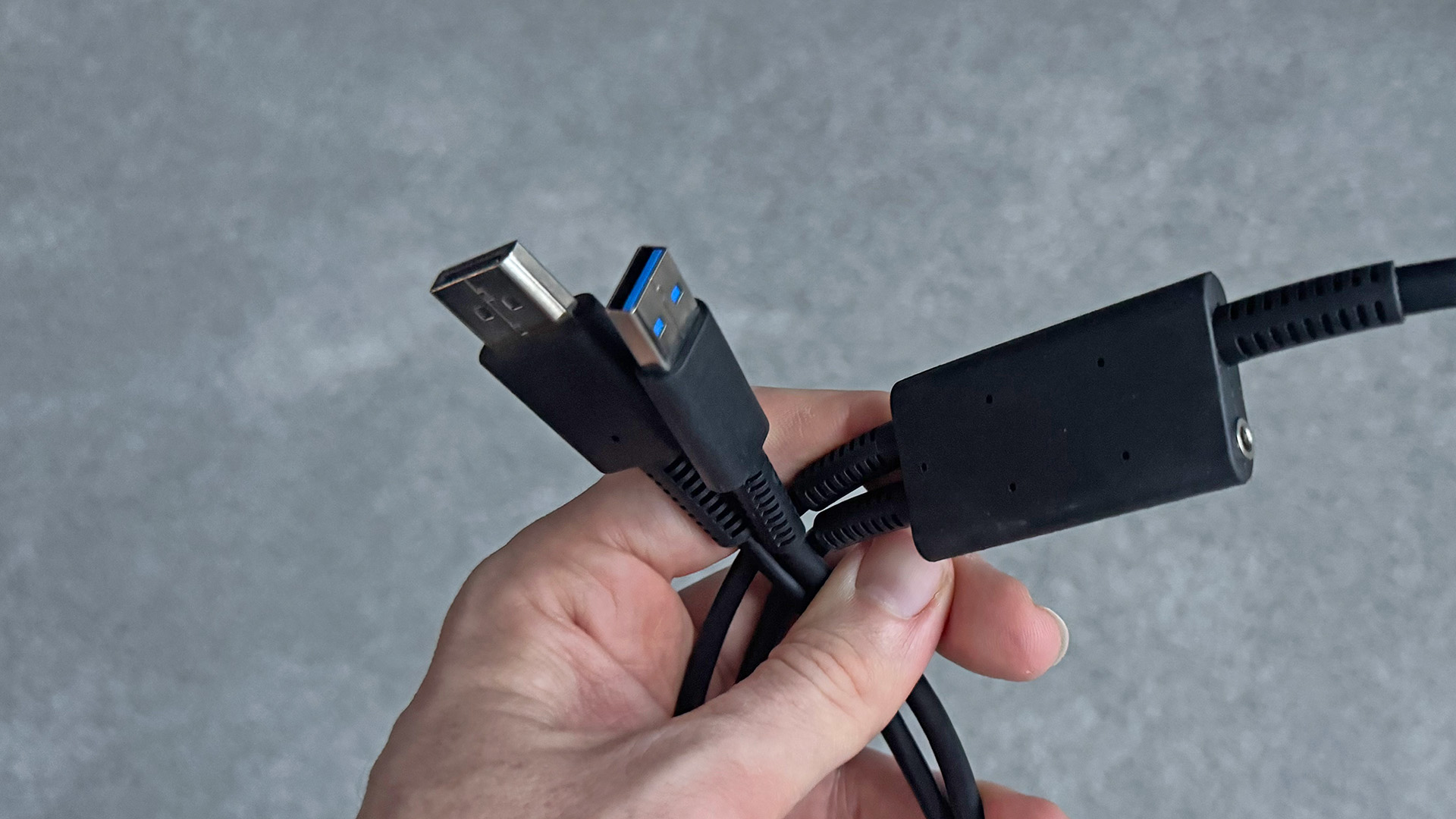
I found the Crystal Light’s included head strap to be an unfortunate case of close-but-not-quite. Styled more like what other brands consider a pro strap, the Crystal Light features rigid side arms that wrap around to a rear pad and ratchet tightening dial. This setup offers a good amount of adjustment and is pretty comfortable overall, however, the shape of the rear pad does little to offset the front-heavy nature of the headset itself. It’s a triangular pad which means it pushes against rather than grabbing the back of your head. I can’t help but feel a ring would have been a better choice and would have gone a long way to solving the balance issue.
For a $899/£729 VR headset, the build quality of the Pimax Crystal Light is pretty underwhelming across the board. The hard plastic shell of the headset has a hollow feel that’s reminiscent of a more budget offering and the same is true of the controllers. The glossy plastic here lacks any kind of comfort or grip texturing, and they feel almost toylike in your hand as a result. Placing them side by side with the Meta Quest 3 controllers I found a stark contrast in both look and feel. Meanwhile, both the front and rear head strap pads are simple bare foam without a more comfortable fabric covering or more hygienic silicon cover. Not only does this make them feel a little rough, but they’re absolute sweat sponges and the simple velcro fastening feels a little like a bodged DIY fix rather than the official installation method.
Features
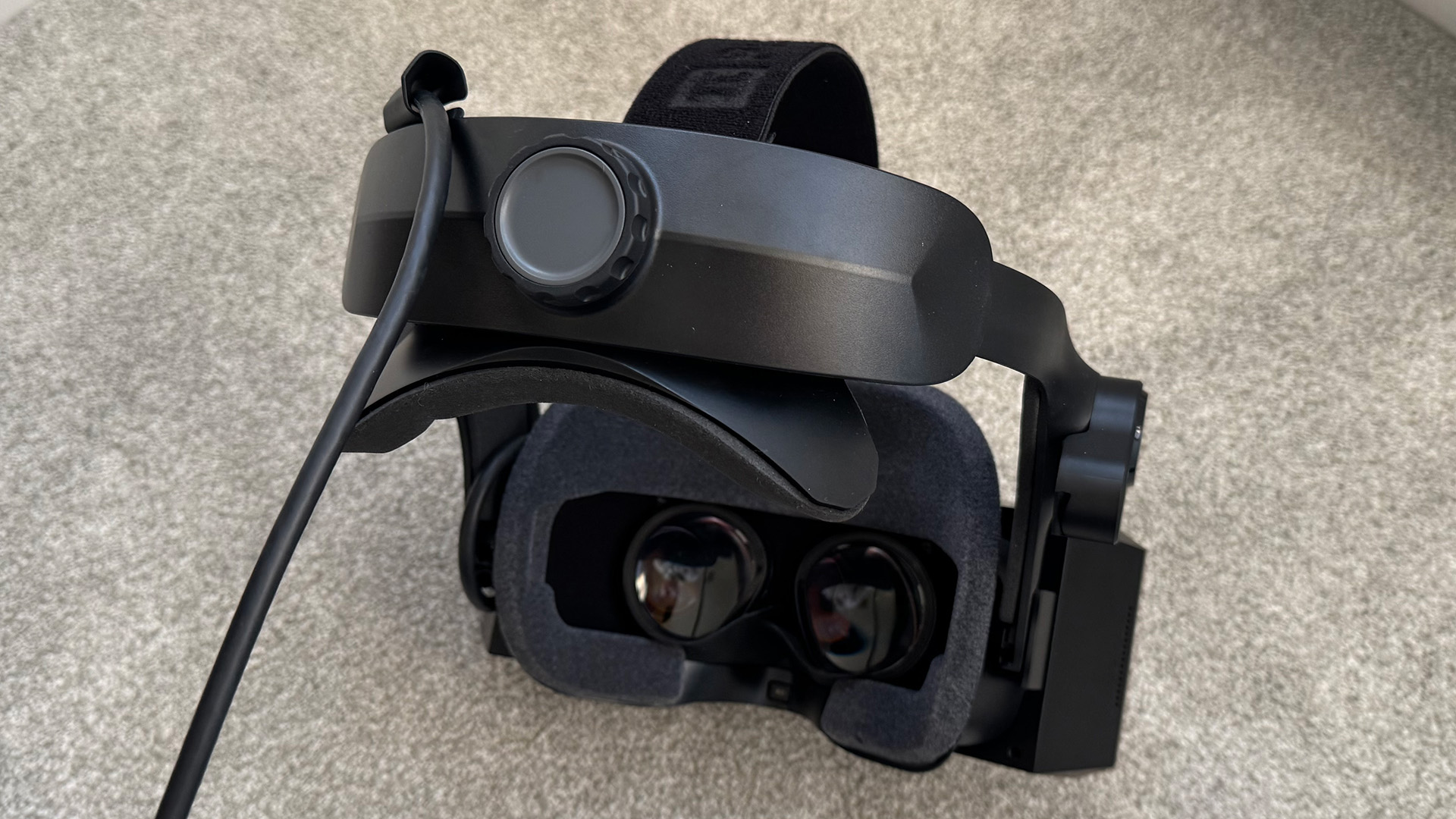
The Crystal Light is a wired-only VR headset, somewhat of a dying breed these days, and after a couple of days of testing, I can understand why. Admittedly, things started out well. Pimax has done a good job of simplifying the connection process from the fully-fledged Crystal, doing away with a confusing and convoluted USB hub system in favor of a single, three-pronged cable. You’ll need to provide external mains power (an adapter is included), along with a USB 3.0 port and a DisplayPort connection, but getting started is as simple as plugging all three in.
| Processor | NA - PCVR only |
| Resolution | 2880 x 2880 per eye |
| Refresh rate | 60, 72, 90, 120Hz |
| Field of View | 115 degrees |
| Displays | QLED + Mini LED with optional local dimming |
| IPD | 58-72mm manual |
| Cameras | 2x 32MB cameras |
| Audio | Integrated speakers, 3.5mm jack, 2x microphone |
| Lenses | Aspheric |
| Weight | 815g |
| Eye tracking | None |
| Foveated rendering | Yes |
| Connectivity | DisplayPort, Power Adapter |
The Pimax desktop app was quick to recognize the Crystal Light and I had no issues with the headset being picked up and welcomed by SteamVR either. The Pimax app isn’t the prettiest or most intuitive thing to use though, it throws a lot of checkboxes, dropdowns, and sliders at you without much in the way of hand-holding and I’d have appreciated more of an initial setup walkthrough here. I’m an experienced but simple VR user, I’ve spent a lot of time playing both PC and standalone VR games across a few different headsets, though consider myself a layperson in my knowledge. It’s clear here that Pimax isn’t targeting the me of this market. This is an advanced headset for a smaller, more niche crowd and not something for the casual community.
Performance

For casual players I simply cannot recommend the Pimax Crystal Light, it’s just not the right choice for pickup-and-play VR gaming. Trying to use the Crystal Light for games like Walkabout Minigolf and Beat Saber was a frustrating experience filled with disconnections, poor performance, and immersion-breaking stumbles - none of which I encountered when playing over a wireless connection to a Meta Quest 3 (or 2, for that matter). My PC is a pretty standard mid-range machine with a 12th-gen i7, an RTX 3070 and 64GB of RAM. It’s no powerhouse but it’s a pretty common setup that can generally run close to max settings on most titles in 1440p. More importantly, I’ve had no performance issues wirelessly streaming either of these relatively lightweight titles in the past, yet when cabled to the Pimax Crystal Light I experienced tearing, low FPS, and a couple of complete meltdowns.
The Crystal Light’s cable is thick, heavy, and not particularly flexible, so no matter how I positioned it I always felt like it was trying to pull my head back up while standing over a putt. There’s also only 5m of it which sounds like a lot at first but is surprisingly limiting for games like Walkabout Minigolf where I’d prefer to, you know, walk about a bit. Jumping over to a fixed-point game like Beat Saber this was less of a problem, but highlighted a fresh issue with the Pimax Crystal Light - controller tracking. As I wildly flailed my arms around trying to keep up with a barrage of red and blue blocks, the Pimax Crystal Light’s inside-out tracked controllers would often jitter or in some cases briefly lose their place in the world altogether. High movement games also served as a reminder that Pimax has opted to retain the large plastic tracking rings around the top of each controller, mainly because on multiple occasions I flinched as I heard and felt them smack into the protruding sides of the headset itself.
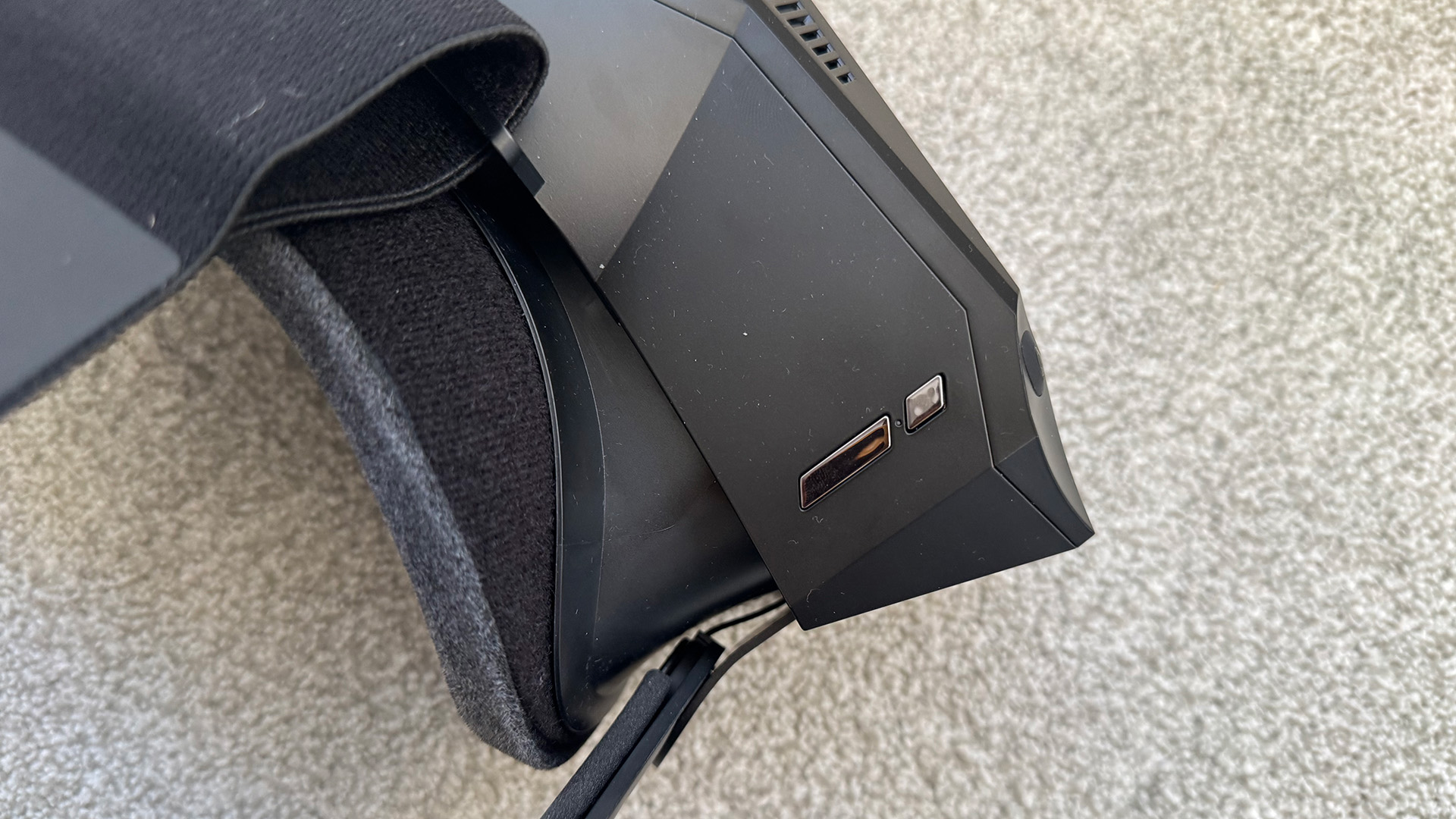
In a strange way, the Pimax Crystal Light feels out of its depth in these shallow gaming waters, 18 holes of virtual minigolf isn’t what the Crystal Light wants or is designed to do. Nothing makes this more obvious than the frankly stunning 2880x2880 per eye QLEDs which are capable of producing beautifully clear, detailed, and richly colored images. These are the highlight of the Pimax Crystal Light and are a genuinely impressive joy to look at, even if the FOV is a little tighter than I’d expected or would have liked. Before it tried to make my PC explode I was very briefly able to have F1 24 let me sit in the cockpit in the garage and look around. Even the smallest text details of the car were sharp and legible, I’d have loved to have actually been able to head out on track.
These unbelievably crisp, deeply black yet highly saturated displays speak to where the Pimax Crystal Light is going to be best implemented. This is a headset for high-end users who don’t get enough from the likes of PSVR 2. It’s for games with precisely tuned, and more importantly, static simulation scenarios where the headset needs to simply act as a window for your eyes into the virtual world. Pimax was named as Microsoft’s ‘Official Peripheral Partner’ for MSFS2024 and it’s a partnership that makes perfect sense. I can imagine the joy clearly reading every dial in the cockpit must bring, if you can get things off the ground.
Should you buy the Pimax Crystal Light?
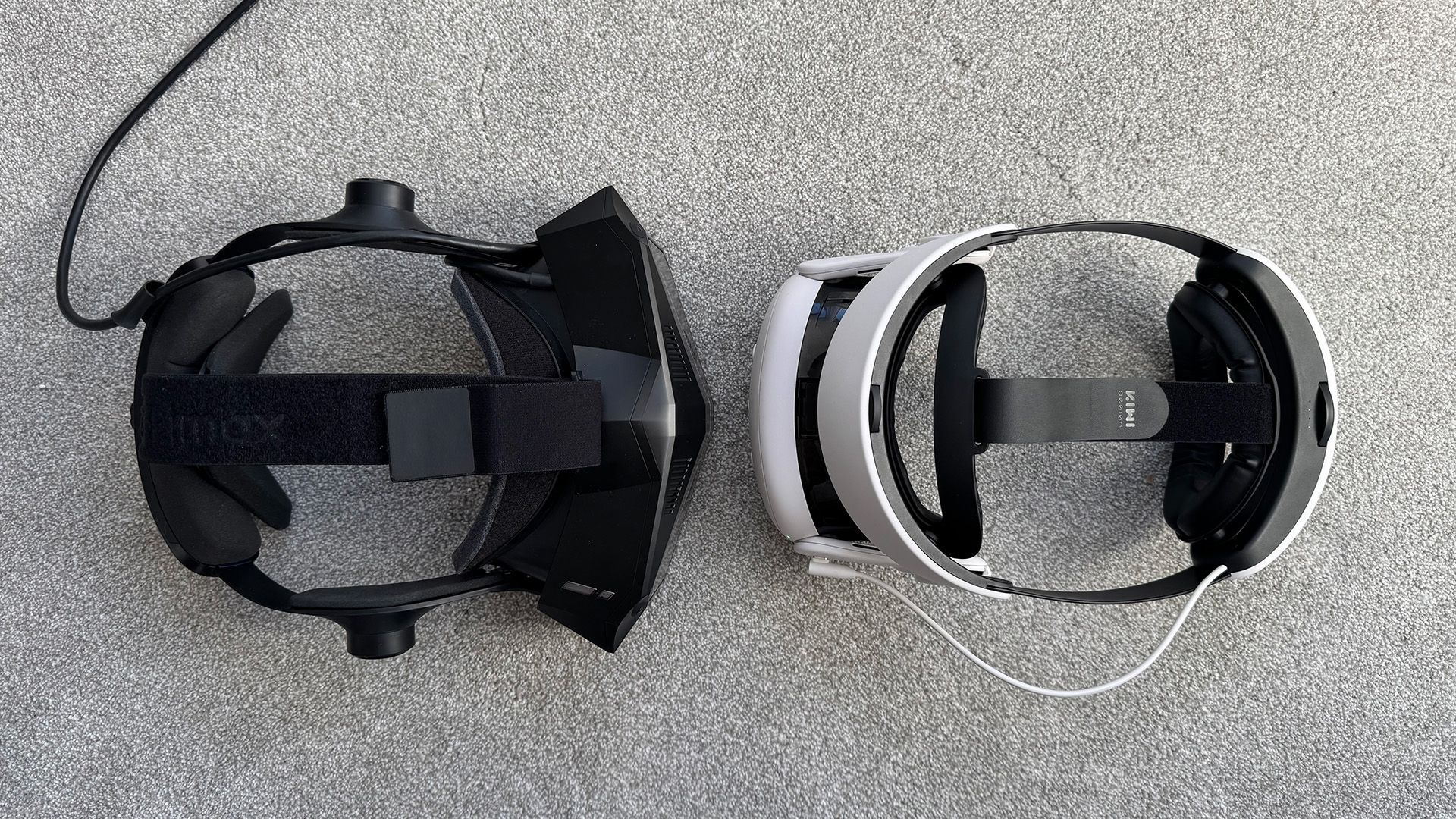
Ultimately the problem with the Pimax Crystal Light is twofold. While it does feature the best displays of any VR headset I’ve tested, giving the HTC Vive Pro 2 a run for its money on a spec sheet, they’re housed inside a body that doesn’t reflect its steep $899/£729 price point and it requires sizable further investment to function. Driving these high-resolution displays needs far more processing power than I, or indeed most standard gamers, will be able to offer it too and even dropping the settings as low as possible both in-game and using the lowest F1 24 preset in the Pimax app couldn’t produce a playable experience.
Competition is a great thing and there’s no harm in a VR headset aiming for something different, but it increases the risks dramatically and unfortunately, those risks haven’t paid off for Pimax here. The Crystal Light is a good tech demo for Pimax’s displays, a showpiece for what’s possible with VR graphics, and perhaps a nod to what’s to come in the next year or two but it’s not the finished article. Yes, within a very small set of very finely tuned setups, it has the potential to do a very specific job incredibly well, but up against some stiff and versatile standalone competition, it’s just not the VR headset to go for.
How we tested the Pimax Crystal Light
I used the Pimax Crystal Light VR headset to try a range of VR games including Walkabout Minigolf, Beat Saber, and F1 24 in a sim racing setup. Throughout it was connected to my gaming PC featuring an Intel i712700K, RTX 3070, and 64GB of RAM, and settings for each title were adjusted both in-game and using the presets available in the Pimax desktop app.
For more on our testing methodology, check out the full GamesRadar+ Hardware Policy.
For more on VR, check out the best Meta Quest accessories. If you need a rig to hook this headset up to, take a look at the best gaming PCs and the best gaming laptops.
Alex is a streamer who has been creating gaming content for over a decade, streaming on Twitch regularly across the last five years. With a degree in film and a background in sports media, you'll find him jumping between 60,000 seat stadiums and his Animal Crossing island (where he's growing pears, in case you were wondering).
